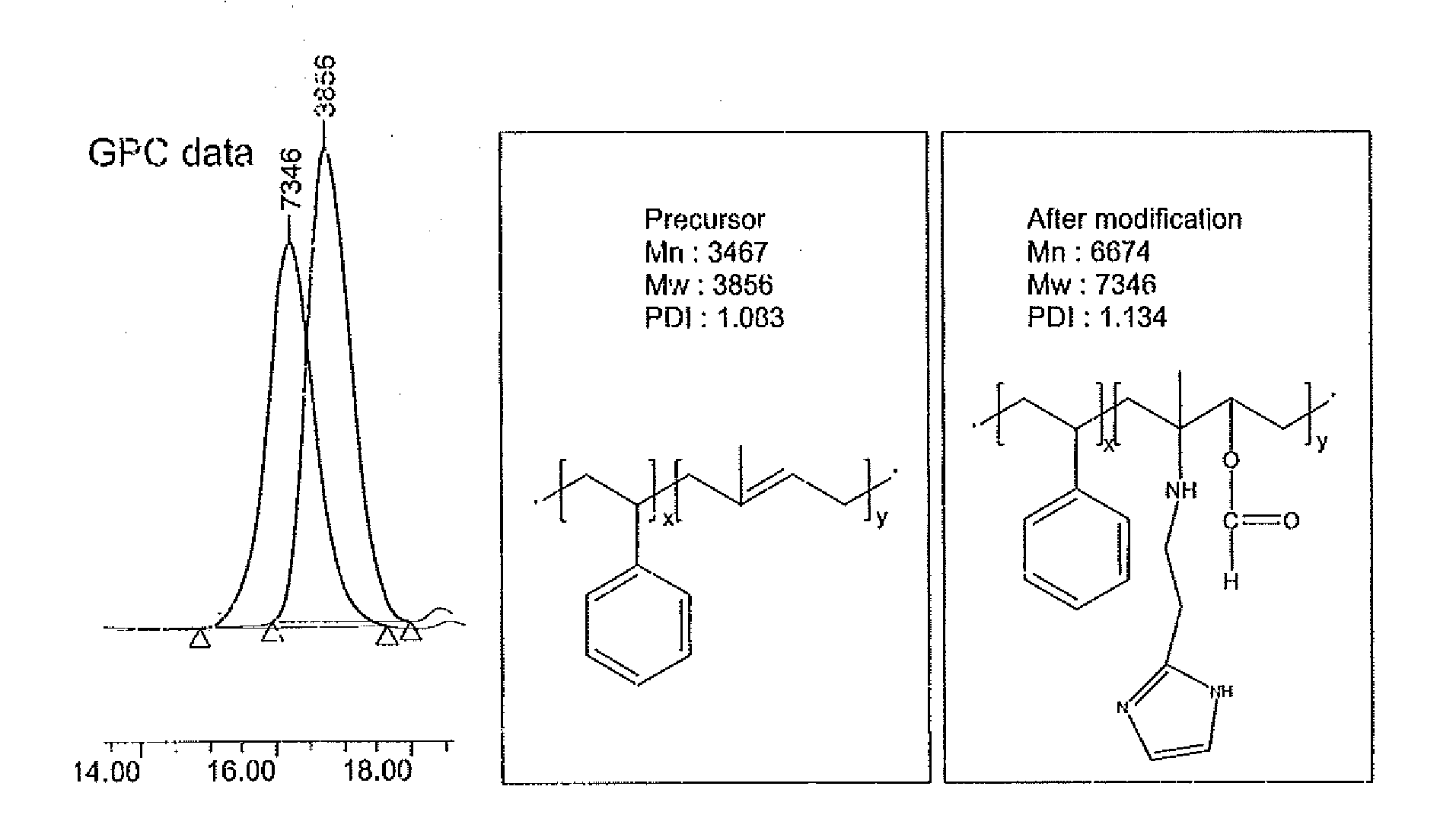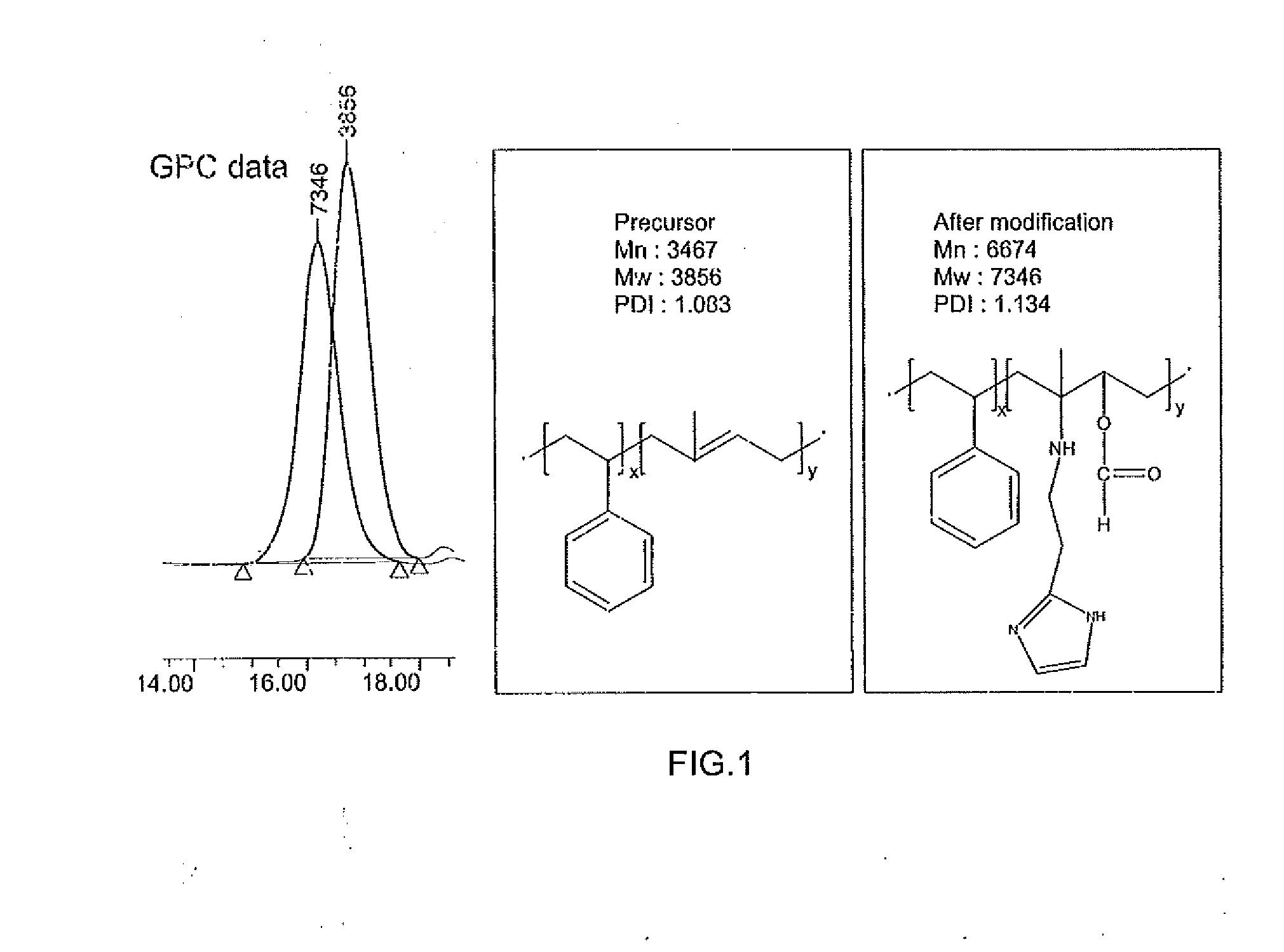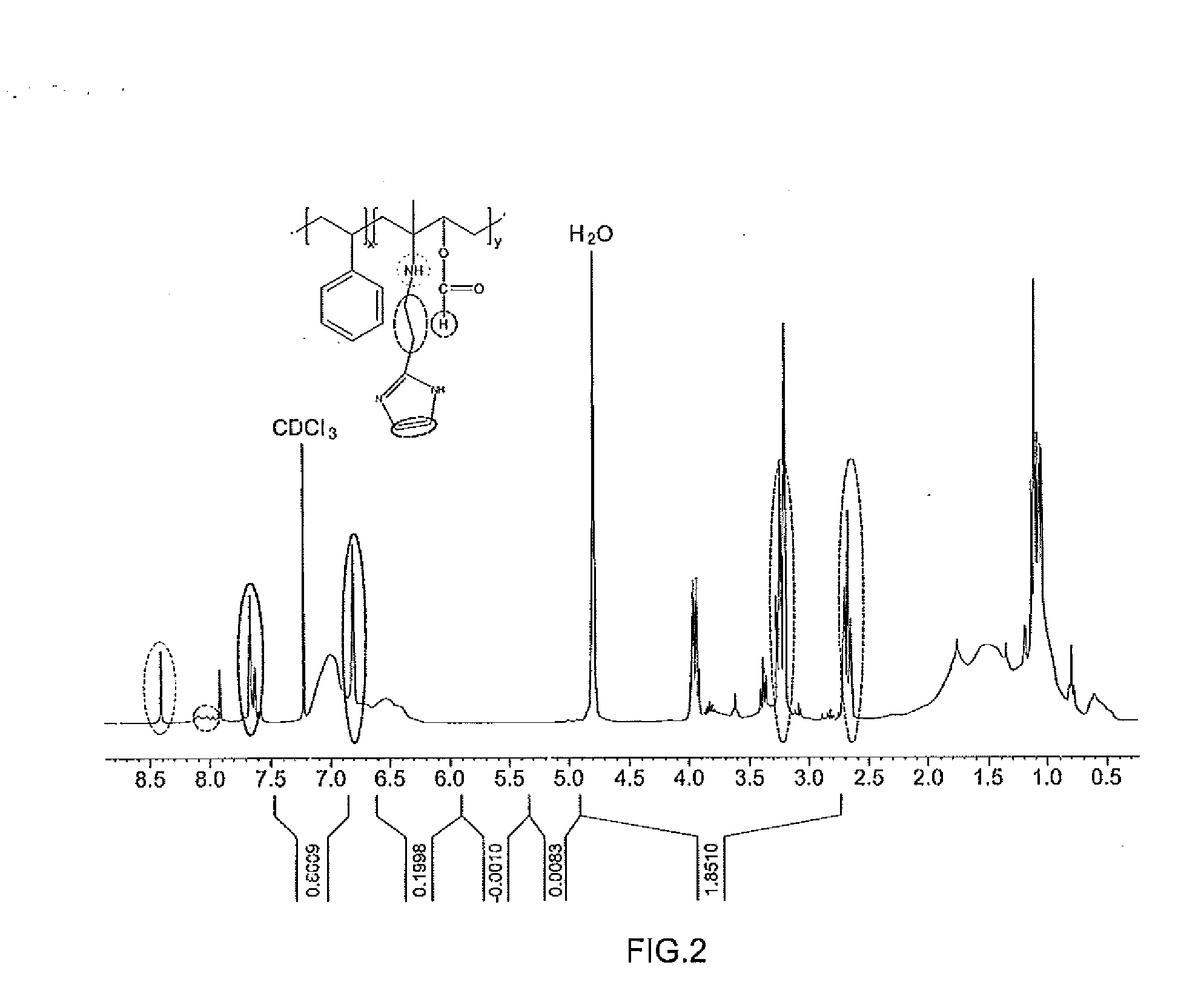Polymer electrolyte membrane chemically bonded with ionic liquid and fuel cell using the same
- Summary
- Abstract
- Description
- Claims
- Application Information
AI Technical Summary
Benefits of technology
Problems solved by technology
Method used
Image
Examples
example
Manufacturing of Polymer Electrolyte Membrane
[0049]30 parts by weight of imidazole of the ionic liquid having various anions (e.g., BF4−, PF6−) acting as a bronstead acid was dissolved in THF (tetrahydrofuran, ≧99%) / MeOH and doped, after which 70 parts by weight of poly(styrene-block-2-histamine methylbutylene acrylate) (polymer 3) manufactured in Manufacturing Example was mixed using the mixing solution and then stirred for 24 hours at room temperature. After the solvent was entirely removed from the solution at room temperature in the existence of argon (Ar), the solution was vacuum-dried for 10 days at 50° C., thereby manufacturing a polymer electrolyte membrane chemically bonded with the ionic liquid.
experimental example 1
Structural Analysis of Compound Manufactured by Embodiment
[0051]The molecular weight and molecular formula of the compound obtained in the foregoing embodiment were determined using a high-performance liquid chromatography (HPLC) analyzer, and identification of the structure of the compound was performed by analyzing a 1H NMR spectrum through nuclear magnetic resonance analysis (Bruker AMX 500) (see FIG. 2).
[0052][Chemical Name] poly (stryele-block-2-histamine methylbutylene acrylate)
[0053]Molecular Weight: 7.3 kg / mol (3.8-block-3.5 kg / mol)
[0054]Molecular Formula: poly(styrene-block-2-histamine methylbutylene acrylate)
[0055]1H-NMR (500 MHz, CDCl3) δ 2.7 & 3.3 ppm (CH2 linker), 6.7 & 7.2 ppm (histamine ring), 8.1 ppm (000H), 8.4 ppm (NH)
experimental example 2
Small-Angle X-Ray Scattering (SAXS) Measurement
[0056]The SAXS experiment was conducted in a 4Cl SAX beam line of a Pohang Light Source (PLS). For the polymer electrolyte membranes manufactured by Embodiment and Comparative Example, small-angle X-ray scattering data was measured in the condition of Ar and room temperature.
[0057]As shown in FIG. 3, the polymer electrolyte membranes manufactured by Embodiment and Comparative Example have particular nano structures with periods of 7.5 nm and 25.4 nm, respectively, at room temperature. 25.4 nm shows the periodicity of a lamella in a plate shape and 7.5 nm indicates a size of an ionic domain formed by histamine. This means that the histamine forms re-ordered arrangement in the polymer's nano structure (see FIGS. 3 and 4).
[0058]The order of the lamella structure progressively increased in the experimental series of w / o doping, BF4 doping, and PF6 doping, respectively. Accordingly, it may be seen that hydrophobic anions are involved in the ...
PUM
| Property | Measurement | Unit |
|---|---|---|
| Ionicity | aaaaa | aaaaa |
Abstract
Description
Claims
Application Information
 Login to View More
Login to View More - R&D
- Intellectual Property
- Life Sciences
- Materials
- Tech Scout
- Unparalleled Data Quality
- Higher Quality Content
- 60% Fewer Hallucinations
Browse by: Latest US Patents, China's latest patents, Technical Efficacy Thesaurus, Application Domain, Technology Topic, Popular Technical Reports.
© 2025 PatSnap. All rights reserved.Legal|Privacy policy|Modern Slavery Act Transparency Statement|Sitemap|About US| Contact US: help@patsnap.com



